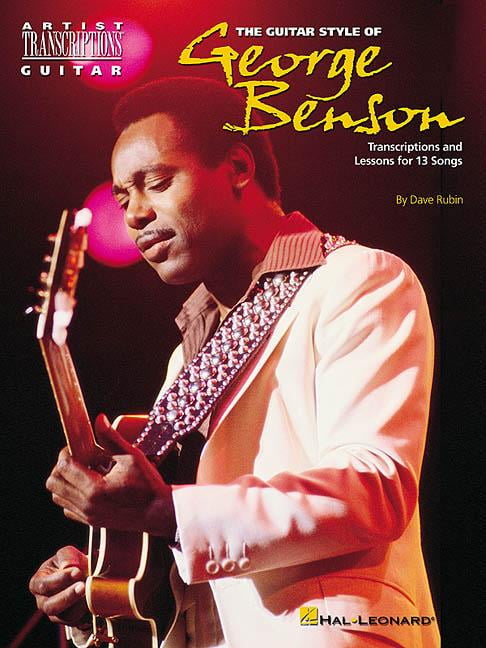


It should be noted, via the reissue information, that this performance ended-up being the 3rd take of 4. For an ending, there would be a vamp, with George continuing to solo for a fade.
#GEORGE BENSON TRANSCRIPTIONS FULL#
If George took 2 choruses, and Herbie took one, and there was a full out-head, the performance would be well over 9-minutes long! So, obviously with some thought, it was decided that George would play 1 chorus, Herbie would play a 1/2-chorus, and then Benson would rejoin at with a loose interpretation of that melody, and then play the last. The melody statement alone, one full chorus takes about 1:35, so do the math. A ballad can really eat-up a lot of time without even trying hard, so solo space can be at a premium. The reason for this was so that in the mastering process, the pressing could be made to be as hot, loud, as was possible. Producers endeavored to keep the total time of each side of the LP to no more than 19-minutes, with 18-minutes viewed as the ideal. However, when his solo arrives, the rhythmic treatment becomes a light swing, which is felt in 2, and therefore, I decided to write out his one chorus solo in cut-time as you will see.Īs this album was recorded during the LP Era, there was a much greater concern for the time, the length of each song on an album. As the melody is played in 4/4, he puts a bluesier spin on the changes by passing through Cm7-F7-Bb7-Eb7 before arriving at the Ab chord, which he chooses to play as a dominant 7th type chord, Ab7(13), where others might play that same chord as Abmaj7. Here, Benson offers a really nice touch with some alternate chord changes that appear during the sections in bars 5-6. I wonder what, if any, influence Johnny Pacheco had on this rhythmic feel? Usually, when any artist, especially a great artist, interprets a standard, there will be some kind of personal stamp placed on the arrangement somewhere. Cobham enters lightly at, with Herbie Hancock finally arriving at letter. "What's New?" offers the traditional song form, -, and here, George Benson performs the ballad as something close to a Latin bolero feel, with the first finding his guitar accompanied by Carter's bass and Pacheco's conga. This performance, and the recording quality, captures just how beautiful George's touch and tone are on the guitar, and how liquid and elastic his always blues-related phrasing can be. Bass) Billy Cobham(Drums) and Latin legend, Johnny Pacheco(Conga).
#GEORGE BENSON TRANSCRIPTIONS PLUS#
Here he appears in a quartet plus percussion setting, and is accompanied by greats such as: Herbie Hancock(Ac. I have always loved Benson's interpretation of this tune, as it certainly represents the most Jazz-oriented approach that he was to offer on the recordings from this period. As I will try to explain a bit later, " What's New?" has always been a favorite ballad of mine, and it has been interpreted by practically all the great Jazz artists. " GOODIES," recorded later in 1968, again with Edwards as producer, was to be his last recording for Verve, yet, his relationship with Creed Taylor was about to begin both at A&M, and later with CTI. His three prior recordings were all in the context of organ groups: "THE NEW BOSS GUITAR OF GEORGE BENSON"(Prestige) with Jack McDuff in 1964, and both "IT'S UPTOWN"(1966) and "COOKBOOK"(1966) with his own group for Columbia Records. Recorded and released in early 1968, George Benson's " GIBLET GRAVY" was his first album for Verve Records under the production guidance of Esmond Edwards.


 0 kommentar(er)
0 kommentar(er)
